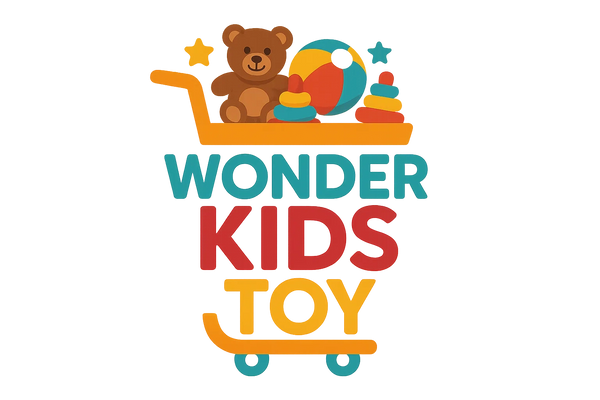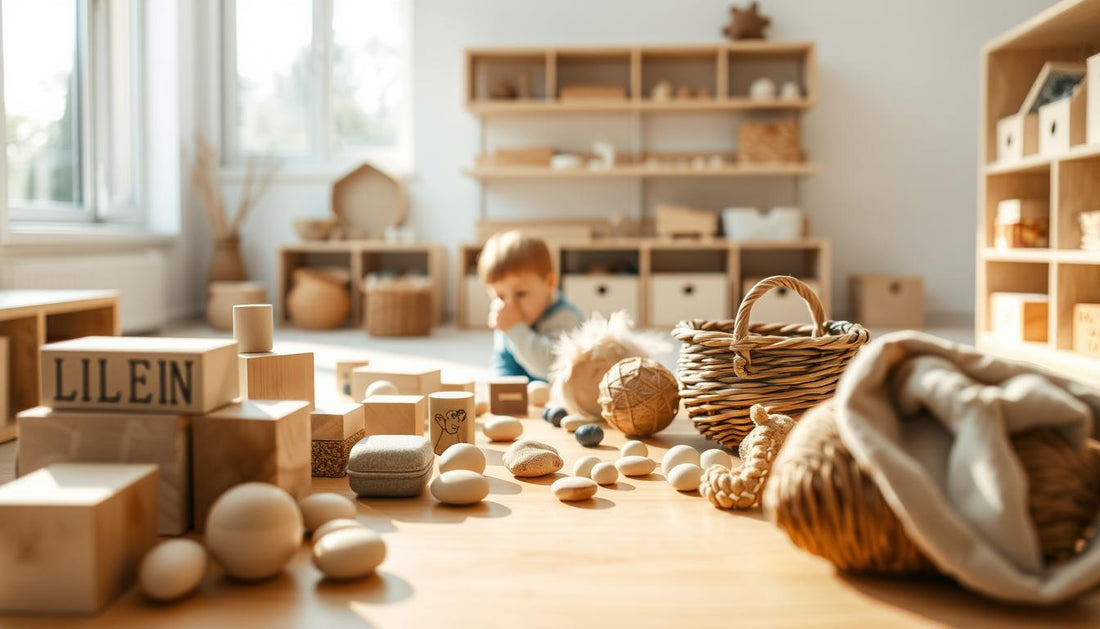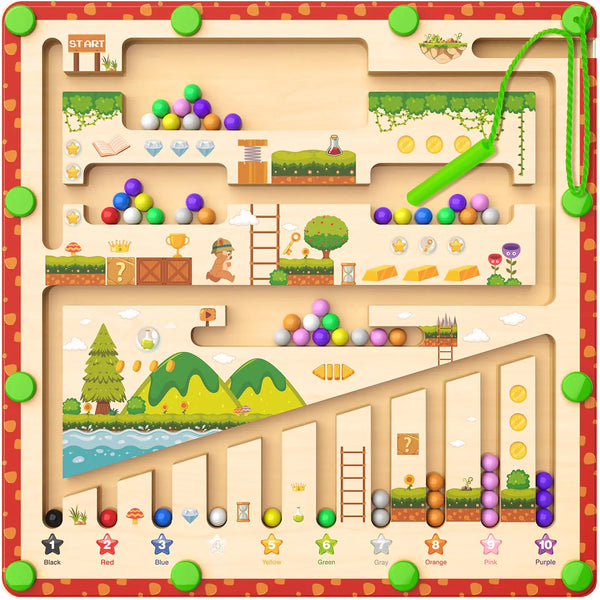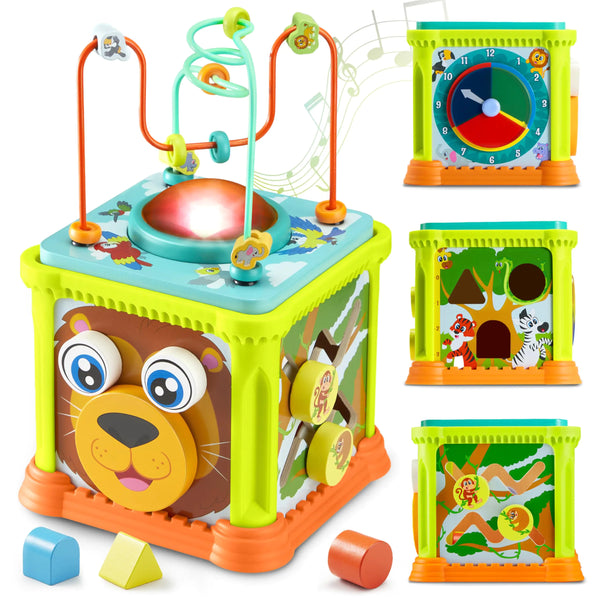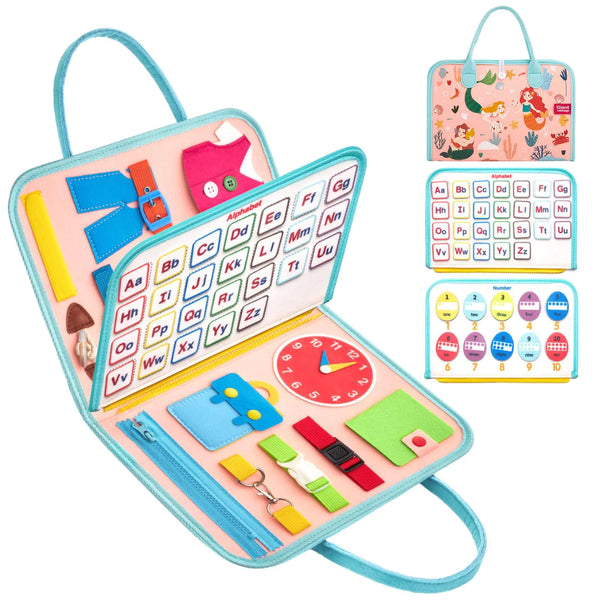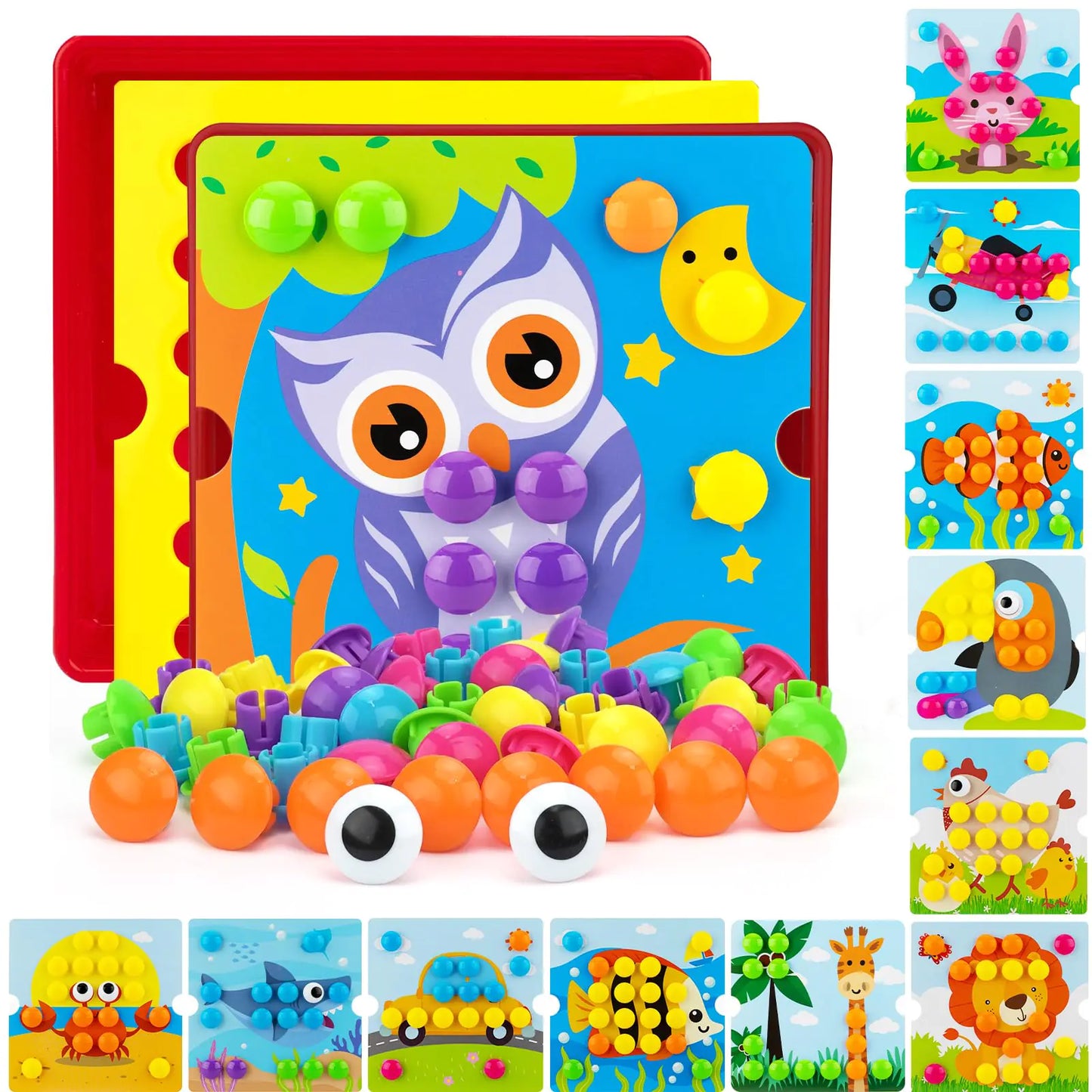I've always been amazed by how open-ended toys spark kids' creativity. In a Montessori setting, these toys are key for kids to learn independently.
My love for open-ended toys comes from seeing how they boost kids' creativity and imagination.
Key Takeaways
- Open-ended toys promote creativity and imagination in children.
- They allow children to learn at their own pace.
- Open-ended toys are versatile and can be used in multiple ways.
- They foster independent learning and exploration.
- These toys are essential in a Montessori setting.
The Concept of Montessori Education
Montessori education focuses on special materials and activities that help kids feel accomplished. It's not just a teaching method. It's a way to see how children learn and grow.
What is Montessori Education?
Montessori education puts kids at the center of learning. It gives them a sense of mastery and accomplishment. This happens through specially designed materials and activities that encourage kids to learn independently.
It's all about hands-on learning and working together. Kids get to explore and understand things at their own pace.
At the heart of Montessori is the use of educational toys and materials. These are made to help kids learn and grow. They're designed to let kids learn from their mistakes, deepening their understanding.
Key Principles of Montessori
The Montessori method is based on several key principles. These guide how it's practiced. Some of the most important include:
- Self-Directed Learning: Encouraging kids to take charge of their learning.
- Hands-On Activity: Using practical activities to learn and explore.
- Collaborative Play: Creating a space where kids can learn from and with each other.
- Specially Designed Materials: Using Montessori materials to support independent learning and mastery.
By following these principles, educators and parents can create a supportive learning environment. This environment helps kids develop and love learning.
The Importance of Open-Ended Play

As a parent, I've seen how open-ended play boosts a child's creativity. It's key for childhood growth, letting kids explore and express freely.
Open-ended toys, like building blocks and art supplies, spark creativity. They're different from one-use toys, encouraging kids to think creatively and solve problems.
Benefits of Open-Ended Toys
Open-ended toys offer many benefits. They improve fine motor skills and hand-eye coordination. They also boost creativity, imagination, and self-expression, vital for a child's growth.
- Enhance creativity and imagination.
- Develop problem-solving skills
- Foster independence and self-confidence
- Improve fine motor skills and hand-eye coordination
Dr. Maria Montessori said, "The greatest sign of success for a teacher is to be able to say, 'The children are now working as if I did not exist.'" This shows the value of letting kids learn at their own pace.
"The greatest sign of success for a teacher is to be able to say, 'The children are now working as if I did not exist.'"
Fostering Creativity and Imagination
Open-ended toys encourage imaginative play. They create their own stories and worlds. This play boosts creativity and imagination, allowing kids to express themselves and explore.
| Toy Type | Benefits | Examples |
|---|---|---|
| Building Blocks | Develops fine motor skills and problem-solving abilities | LEGO, Magna-Tiles |
| Art Supplies | Fosters creativity, self-expression | Crayons, Paints, Markers |
| Sensory Toys | Enhances sensory awareness, exploration | Playdough, Sand, Water Tables |
Using open-ended toys in playtime helps kids develop creativity and problem-solving skills. This prepares them for life's challenges.
How Open-Ended Toys Enhance Learning

Open-ended toys help kids learn by letting them explore and discover things on their own. They develop problem-solving skills and learn to handle a range of feelings. This sets a strong base for their future school success.
Encouraging Problem-Solving Skills
Open-ended toys, like building blocks and puzzles, challenge kids to think deeply. They learn to solve problems and see things from different views. This builds their confidence and ability to handle challenging tasks.
For example, building with blocks teaches kids about balance, geometry, and how things fit together. These skills are key to problem-solving and help in many areas of life.
Promoting Emotional Growth
Open-ended toys also help with emotional growth. Kids experience many emotions while playing, such as happiness and sadness. Learning to deal with these feelings is essential for growing up.
Play lets kids share their feelings and work through tough times safely. This helps them develop emotional intelligence. It's essential for good relationships and personal happiness.
Using open-ended toys in play helps kids learn essential skills. They improve in problem-solving and emotional growth. This makes their learning experience richer and prepares them for the future.
My Favorite Open-Ended Toys

My journey with Montessori has shown me the power of open-ended toys. I want to share some of my favorites. These toys spark kids' imagination and help with their thinking and feelings.
Building Blocks: Versatile and Fun
Building blocks are key in Montessori. They let kids build anything they dream of, from simple homes to big projects. Lisa Murphy, a famous Montessori teacher, said, "Blocks are more than blocks; they spark creativity and problem-solving."
"The way we play is the way we learn."
These blocks help kids think creatively and solve problems. They also learn about balance and structure.
Art Supplies: Unlimited Creativity
Art supplies are a must-have for open-ended play. They include paints, crayons, markers, and paper. Kids can explore colors, textures, and techniques. They improve their fine motor skills and share their thoughts and feelings through art.
Nature-Inspired Toys
Nature-inspired toys, like playsilks and wooden figures, connect kids with nature. They are beautiful and spark imagination and learning. For example, play silks can be a cape, a fort, or a puppet stage.
- Playsilks for imaginative dress-up and role-playing
- Wooden figures for storytelling and creating scenarios
- Natural materials for sensory exploration and understanding the environment
Using these toys in playtime boosts a child's creativity and love for nature.
Choosing the Right Montessori Toys

The world of Montessori toys can seem overwhelming. But focusing on safety and age appropriateness makes it easier.
When choosing Montessori toys, consider a few key factors. This ensures they help your child grow well.
Safety Considerations
Safety is key when picking Montessori toys. Toys should be made from non-toxic materials. They should also not have small parts that could be a choking hazard.
- Make sure the toy is made from natural, sustainable materials.
- Check for any recalls or safety notices.
- Stay away from toys with sharp edges or points.
Age Appropriateness
Montessori toys are made for different stages of a child's growth. Choosing toys that fit your child's age and developmental stage is very important.
| Age Group | Montessori Toy Examples | Skills Developed |
|---|---|---|
| 1-2 years | Stacking blocks, sensory balls | Fine motor skills, hand-eye coordination |
| 2-3 years | Puzzles, shape sorters | Problem-solving, cognitive development |
| 3-5 years | Building sets, art supplies | Creativity, spatial awareness |
By focusing on safety and age, you can make a great learning space for your child.
Integrating Open-Ended Toys into Daily Life

Adding open-ended toys to our daily life has boosted my child's creativity. It also made them more independent in their play. It's rewarding to watch them dive into these toys, discovering new things and learning at their own speed.
Successfully adding open-ended toys means setting up a space for exploration and creativity. It's not just about the toys. It's about making a place where play and discovery thrive.
Playroom Setup Tips
To make a great playroom, follow these tips:
- Make sure the area is safe and easy to navigate, so your child can explore without risk.
- Arrange toys and materials so they're simple to find and put back, teaching your child about order and responsibility.
- Use natural light and colors to make the space welcoming and inspiring for creativity.
With a well-thought-out playroom, your child will dive deeper into open-ended toys. This will spark a love for learning and exploring.
Encouraging Independent Play
Independent play is key to a child's growth. It lets them follow their interests and learn at their own speed. Here's how to encourage it:
- Introduce open-ended toys slowly, letting your child get to know each one before adding more.
- Don't try to control play; watch and support their interests and discoveries.
- Give your child choices, like picking which toy to play with or how to use a material.
By supporting independent play, your child will develop skills such as problem-solving, critical thinking, and self-reliance.
Observing My Child's Development

Watching my child play gives me great insight into their growth. It's incredible to see how they interact with learning toys. These moments show their developmental milestones.
Milestones Through Play
Open-ended toys let me see my child's growth stages. I notice their problem-solving, creativity, and independence. For example, building with blocks shows their spatial and fine motor skills.
Some crucial milestones I've seen include:
- Improved problem-solving with puzzles and brain teasers
- More creativity and imagination with art
- Better social skills through play with others
Learning Moments with Toys
Learning moments happen when my child figures out something new with a toy. These are key to their growth. Like when they balance blocks to build a tower, it shows they understand physics.
To help these moments, I make sure they have many toys. I also rotate toys and play with them to support their learning. This keeps the play exciting and challenging.
By watching my child play, I better understand their needs. I can support their unique learning journey.
The Social Aspect of Open-Ended Play

Watching my child play with open-ended toys shows me how important it is for their social skills. These toys help kids work together, building a sense of community and teamwork.
Open-ended play offers opportunities for collaborative play. Kids learn to share, negotiate, and achieve goals together. This play helps them develop key social skills, such as communication, empathy, and conflict resolution.
Collaborative Play Experiences
Collaborative play is key in open-ended play. Kids learn from each other, solving problems and building on ideas. For example, when building with blocks, they share their knowledge of shapes and space.
Building Relationships with Peers
Open-ended play helps kids build relationships with peers. Through shared activities, they form bonds and learn critical social skills. These skills are vital for lasting friendships and feeling part of a group.
The social benefits of open-ended play are clear. It equips children with the tools to form strong relationships. As they grow, these skills will benefit them in many areas of life.
Balancing Structure with Freedom

Finding the right mix of structure and freedom is key in Montessori schools. It helps kids learn and grow in a safe, yet open way. This balance lets them explore and learn at their own speed.
Knowing When to Step In
Knowing when to help a child is a big challenge in Montessori. It's important to watch how a child interacts with materials. This helps determine whether they need help or are doing well on their own.
Signs that a child may need intervention include:
- Frustration or distress
- Lack of engagement or interest
- Difficulty in making progress or achieving a goal
When the time is right, teachers can offer support. This helps the child get past tough spots and enjoy learning more.
Allowing for Natural Exploration
It's also vital to let kids explore freely. This means setting up a space that encourages discovery. It should be free from distractions.
| Benefits of Natural Exploration | Characteristics of Supportive Environments |
|---|---|
| Fosters independence and self-motivation | Well-organized and clutter-free spaces |
| Encourages creativity and problem-solving | Access to a variety of Montessori materials |
| Promotes a love for learning | Opportunities for child-led activities |
By finding the perfect balance, we can make a Montessori space that helps kids grow and develop fully.
Encouraging Outdoor Play with Open-Ended Toys

Open-ended toys can turn nature into a playground for kids. Reflecting on Montessori education, I see outdoor play as key to learning.
Nature as a Learning Environment
Nature sparks curiosity and creativity in kids. Open-ended toys make outdoor play meaningful. They boost physical activity and environmental awareness.
Outdoor environments are full of stimuli. Textures, colors, sounds, and smells make learning fun and educational.
Ideas for Outdoor Open-Ended Activities
Outdoor activities can be creative. Kids can make art with sticks, leaves, and rocks. Bubbles, balls, and kites add to the fun. Nature scavenger hunts encourage exploration.
- Creating a nature-inspired art project using items found outdoors
- Using a magnifying glass to explore the details of nature
- Engaging in outdoor games that promote physical activity and teamwork
Outdoor play with open-ended toys enriches a child's education. It goes beyond classroom learning.
Using Open-Ended Toys for Themed Learning

Open-ended toys are great for teaching kids to think creatively. They make learning fun and interactive. This way, kids can learn in their own special way.
Themed learning means playing with a focus, like holidays or seasons. Open-ended toys fit right in. They let kids explore and learn at their own speed.
Seasonal Themes and Play
Open-ended toys are perfect for seasonal play. For example, in winter, you can make a snow wonderland with playsilks. In summer, they turn into a beach or a garden.
| Season | Theme | Open-Ended Toys |
|---|---|---|
| Winter | Winter Wonderland | Playsilks, Blocks, Snowflake decorations |
| Summer | Garden or Beach | Playsilks, Sand, Seashells |
| Spring | Gardening | Seed starters, Gardening tools, Flowers |
Incorporating Holidays into Playtime
Holidays are a great time to use open-ended toys for learning. Kids can build spooky Halloween scenes with blocks. At Christmas, blocks help create a festive village.
Playing with holidays helps kids understand different cultures. It also boosts their creativity and problem-solving skills.
FAQs on Montessori Toys

In my journey with Montessori, I've seen many questions about toys for this educational approach. Montessori toys help kids learn and grow through play. Knowing what makes a toy good for Montessori is very helpful for parents and teachers.
What Makes a Toy Montessori-Friendly?
A Montessori-friendly toy is simple, durable, and focuses on learning. These toys help kids learn on their own and explore. Key characteristics include:
- Made from natural materials
- Simple, non-distracting design
- Promotes hands-on learning
- Encourages independence
When choosing Montessori toys, consider the materials and how they support learning and creativity. Wooden blocks or puzzles are great examples of these toys.
How Can Parents Encourage Open-Ended Play?
Open-ended play is key to kids' growth. Here are some ways to encourage it:
- Give kids many materials and toys that spark creativity
- Let them play freely without too much structure
- Play with your child and show them how to be creative
- Change toys often to keep things interesting and challenging
By using these methods, parents can help create a space for open-ended play. This supports kids' curiosity and creativity.
| Toy Characteristics | Montessori-Friendly | Not Montessori-Friendly |
|---|---|---|
| Materials | Natural materials like wood | Plastic, electronic components |
| Design | Simple, minimalist | Complex, flashy |
| Learning Focus | Promotes hands-on learning | Passive entertainment |
Knowing what makes a toy Montessori-friendly and how to encourage open-ended play is very important. By making wise choices, parents can help their kids learn and grow in a meaningful way.
The Role of Parents in Montessori Play

My journey with Montessori has shown me how vital parents are. Being involved in my child's learning helps them grow and strengthens our relationship.
My Involvement in Playtime
In Montessori, parents do more than provide things. We actively participate in our child's learning. I play with my child, not by telling them what to do, but by playing together. This helps me see what they like and when they need help.
For example, when my child builds with blocks, I might build something simple next to them. This encourages them to create more and learn at their own pace. My role is small but essential, making a safe and supportive space for them.
Encouraging Ownership and Independence
Montessori teaches kids to be independent. As a parent, I help by letting them make choices and own their learning. I try not to interfere unless it's really needed, letting them learn from mistakes. I also celebrate their efforts and successes.
| Strategies for Encouraging Independence | Benefits |
|---|---|
| Allowing children to dress themselves | Develops fine motor skills and decision-making |
| Encouraging children to prepare simple meals | Fosters independence and introduces basic cooking skills |
| Giving children responsibilities | Promotes a sense of ownership and responsibility |
Using these strategies helps my child become more independent. It's great to see them grow into a confident, capable person.
In conclusion, being involved in my child's Montessori education is a journey for both of us. By understanding my role and using strategies that promote independence, I help my child thrive.
Long-Term Benefits of Open-Ended Toys

I've seen how open-ended toys help kids develop skills that last a lifetime. As a Montessori education supporter, these toys shape people who are capable, independent, and creative.
Skills for Life Beyond Childhood
Open-ended toys are key in teaching essential skills for later life. These include:
- Critical Thinking: They help kids think critically and solve problems in new ways.
- Creativity: They let kids explore and express themselves freely, boosting creativity.
- Independence: Kids learn to work independently, make decisions, and own their play.
Raising Independent Thinkers
One significant benefit of open-ended toys is that they foster independent thinking. They give kids the freedom to explore and learn at their own pace. This makes them self-directed, which is key in school and work.
Using open-ended toys in Montessori settings shows that kids can develop significantly when given the right tools. The skills they learn through play will help them succeed in the future.
In summary, open-ended toys offer many benefits. They help develop critical thinking, creativity, and independence. By using these toys, we help kids become successful, innovative, and confident individuals.
Final Thoughts on Open-Ended Toys
Reflecting on my journey with Montessori education, I see how open-ended toys have changed my child. The joy of play is key in childhood. Montessori Toys have helped bring this joy to our lives.
Lessons from My Personal Journey
My time with Montessori has shown me the importance of letting kids explore and learn at their own speed. Open-ended toys have been key. They encourage creativity, problem-solving, and independence.
Embracing the Joy of Play
Looking back, I understand that play is more than just fun. It's about starting a lifelong love of learning. By using open-ended toys, we give our kids the opportunity to imagine, be creative, and learn on their own. Please check out Montessori Toys and find the joy of play for yourself.
FAQ
What are the benefits of using open-ended toys in a Montessori setting?
Open-ended toys boost creativity and imagination. They help kids solve problems and learn at their own speed.
What makes a toy Montessori-friendly?
Montessori toys are made from natural materials. They encourage kids to play on their own and learn through hands-on activities. Examples include wooden toys and sensory toys.
How can I encourage open-ended play with my child?
Offer a range of open-ended toys like building blocks and art supplies. Let your child explore and play freely.
What are some examples of open-ended toys that promote learning and creativity?
Toys like building blocks and puzzles are great. So are art supplies and sensory toys. They help kids learn and grow in many ways.
How do I choose the right Montessori toys for my child?
Think about your child's age and what they need. Look for toys that are safe, durable, and made from natural materials. They should encourage kids to play and learn on their own.
Can open-ended toys be used for themed learning?
Yes, they can. Open-ended toys make learning fun and interactive. They're perfect for learning about seasons and holidays.
How can I balance structure with freedom in a Montessori setting?
Set clear rules but also let kids make choices. Know when to guide them and when to let them explore on their own.
What is the role of parents in Montessori play?
Parents support kids in Montessori play. They encourage independence and provide help when needed. This helps kids develop skills like problem-solving and critical thinking.

